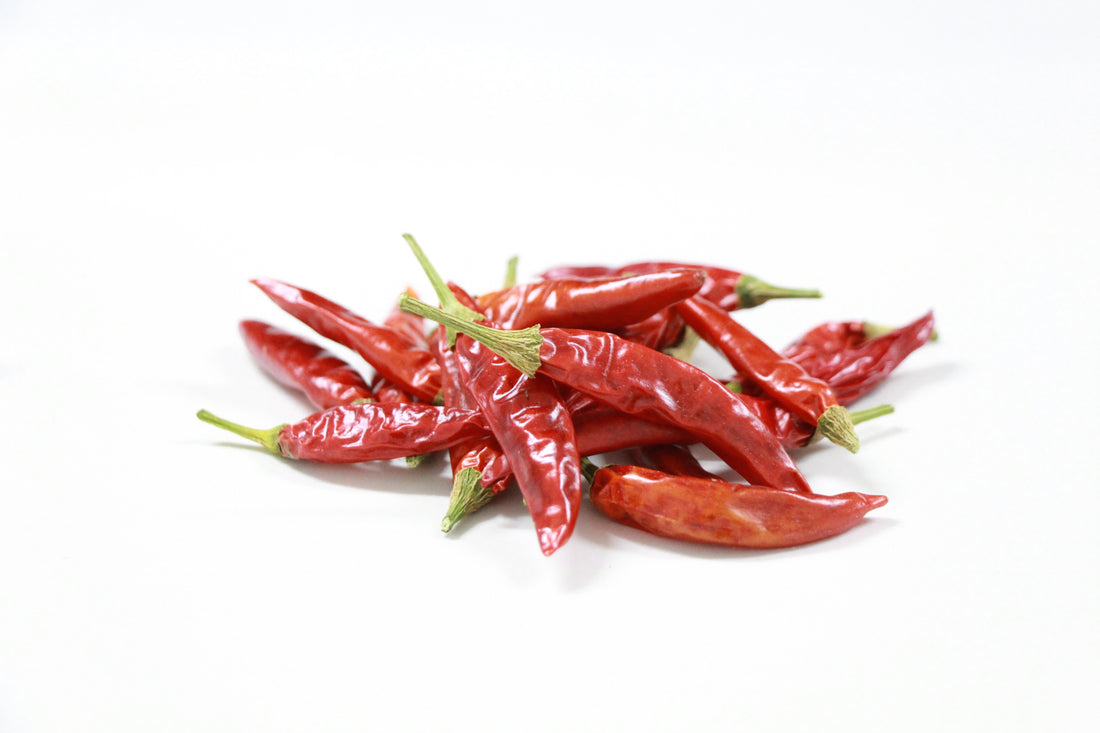Like a culinary Odysseus, the piri piri pepper has travelled far and wide, making its way from medicinal plant to star of Paladin’s piri piri hot sauce, a quintessentially Portuguese condiment. As with each item in the Portugal Box, there’s quite a story behind the flavor.

© Paladin
Throughout its global voyage—from the Amazon river basin to Europe, Africa, and Asia—the spicy piri piri pepper has acquired quite a few nicknames. Piri piri, appropriately, means pepper pepper in Swahili and is used in both Portugal and Mozambique, a former Portuguese colony. Other variations include pili pili in the Democratic Republic of the Congo, peri peri in Malawi, and goat’s pepper or African bird’s eye chili in English. But what’s the story behind all these names, and how did this diminutive pepper make its way around the world?
Piri Piri: A Magical Background
Scholars still speculate about the finer details of how piri piri landed in Europe and beyond. But one thing’s for sure: piri piri pepppers originated in the lush jungles of South America, where native peoples used the pepper for more than just culinary flavor. The rhizome, or root-like stem, was revered for its magical properties and used for a wide variety of medicinal purposes. In Peru and Colombia, piri piri (also known as chintul or kajiji) is still used to make good luck charms, as well as a love potion called pusanga. Natives to the Peruvian Amazon grind up the piri piri rhizome to treat epilepsy and other nerve disorders, while Secoya Indians in Ecuador use it to treat fever and the flu. In Colombia, piri piri is used as an antidote for snake bites.
This small but potent plant most likely traveled from South America to the Bahaman islands via pre-Columbian trade routes. On islands like Hispaniola (modern-day Haiti and the Dominican Republic), the little pepper plant would later become a global phenomenon.
Piri Piri in the “Age of Discovery”
Legend has it that Christopher Columbus first encountered this pepper, along with squash, beans, and maize, when he landed in the Bahamas. As with all of Columbus’s “discoveries,” natives were already cultivating and consuming these foods. But, with the help of the Portuguese, crops like the piri piri pepper would become staples in local cuisines throughout the world.
Though Columbus sailed for Spain, the Portuguese are credited with the widespread diffusion of the piri piri pepper and other Mesoamerican crops in Europe. The Portuguese probably acquired piri piri through trade with settlers in Spanish colonies or with the Spanish mainland. They dispersed it widely, bringing the plant to their colonies in Angola and Mozambique. It’s now used in one quarter of the world’s cuisines, and is ubiquitous in Portuguese restaurants and kitchens as a marinade or condiment.
Piri Piri in the Kitchen
Today, piri piri is best known for its use in the Portuguese hot sauce, Molho de Piri Piri, where it blends sumptuously with lemon, garlic, olive oil, and spices like paprika and bay leaves. Try Paladin’s piri piri hot sauce as a marinade for grilled chicken, as in the Portuguese Frango Piri Piri, or for shrimp, as in the archetypal Mozambican dish, piri piri prawns. The story of piri piri is a primer in cultural and culinary diffusion. And the pepper packs a spicy but subtle punch, no matter what you call it.






